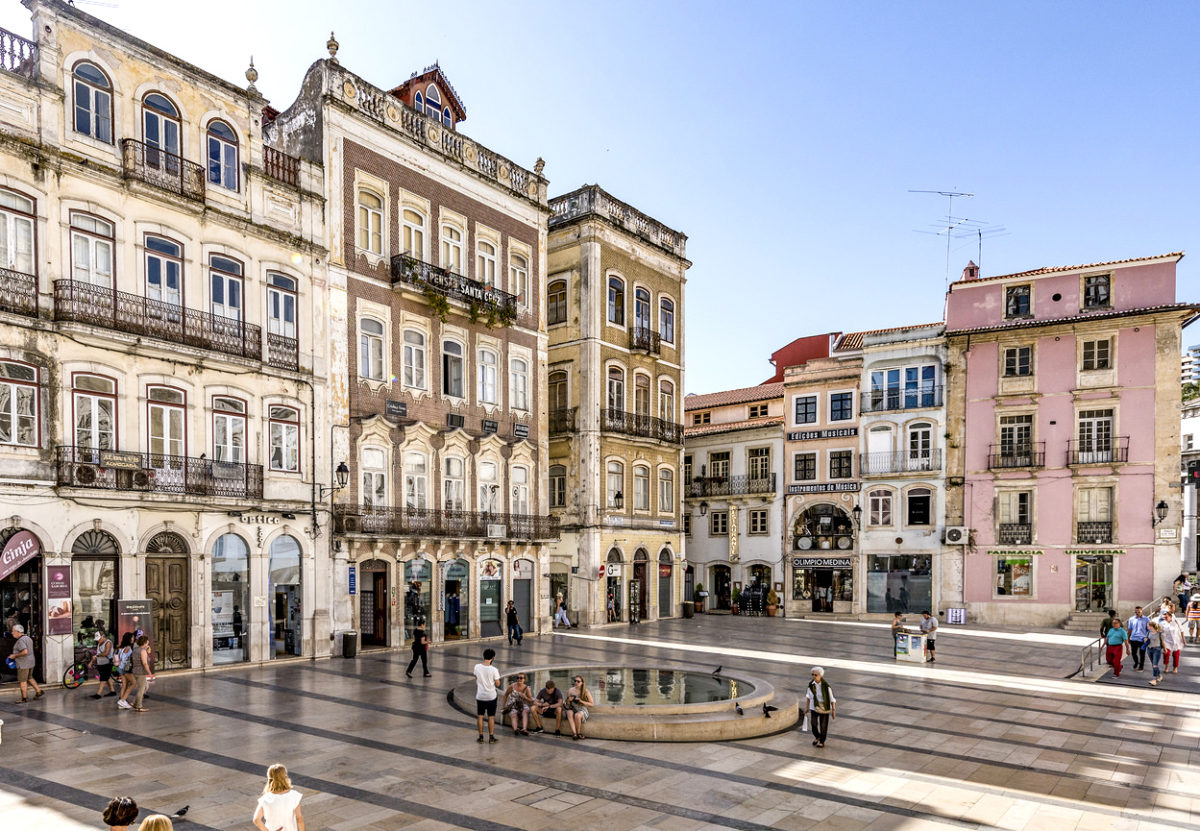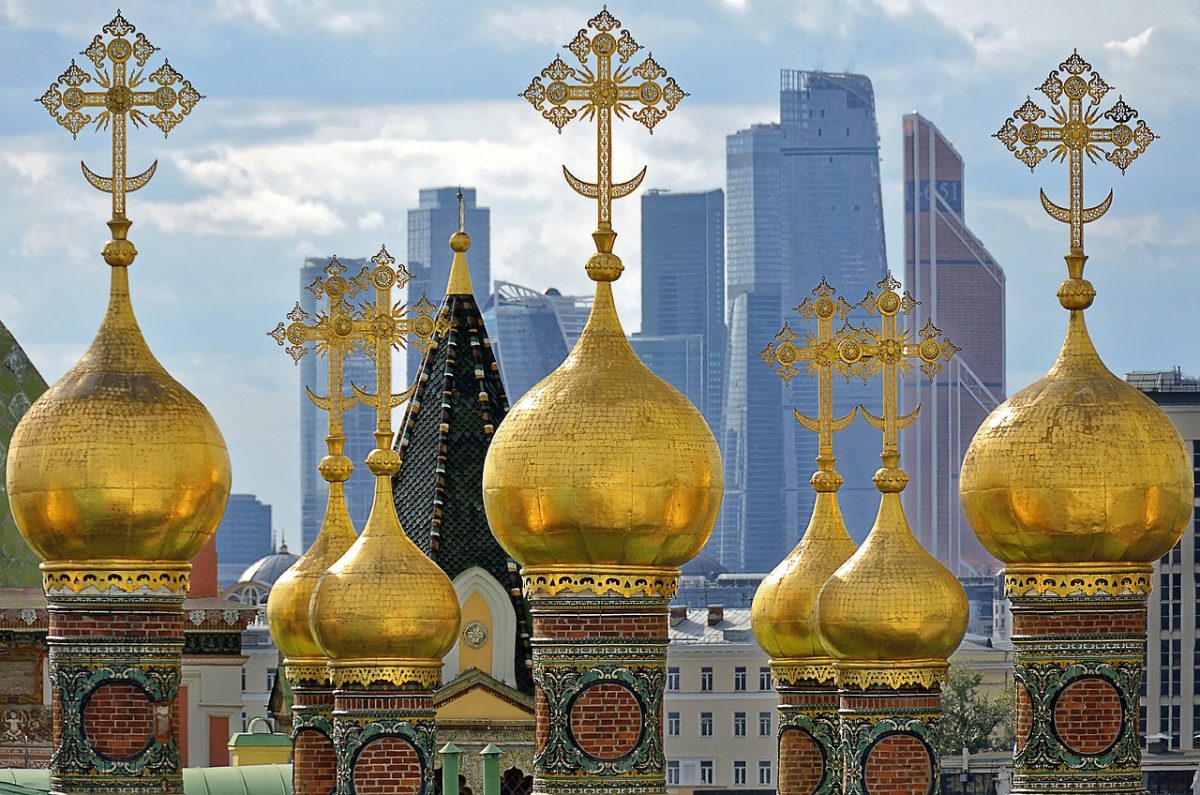Lying halfway between Lisbon and Oporto in the Beiras region of central Portugal, venerable Coimbra nestles on the banks of the River Mondego in dignified glory. Famed for its university – the oldest in the country – and a fantastic collection of handsome churches, serene monasteries, and lively cultural institutions, Coimbra is also a busy commercial hub with its many shops, boutiques, and appetizing choice of cafés and restaurants. The city center is divided into two neighborhoods, the Lower Town and the Upper Town. Its historic heart lies high above the Mondego on Alcaçova hill, known to the Romans as Aeminium. Here, medieval convents, cathedrals, and some fine museums cluster around the old University.
Kings were born in Coimbra; they are entombed here, too. Indeed, it was once the proud capital of the Portuguese nation. This royal heritage permeates the city’s steep hills, narrow lanes, and verdant parks, all of which are best explored on foot. And exploration further afield is rewarded with the largest and most compelling Roman site in Portugal, and an emerald-hued forest of enchanting allure and breathtaking beauty.
On the high banks of the Mondego River, Coimbra is a city with the oldest university in the country. The prestige of this school will hit you when you step onto the Paço das Escolas courtyard. In this rich ensemble of buildings is one of the finest libraries you’ll ever set foot in.
The university is found precisely where Portugal’s first kings had taken up residence centuries before, and the city’s monasteries have tombs for these rulers. For culture, you’ll learn about the tragic love affair between the medieval Prince Pedro I and the noblewoman Inês, while Coimbra has its own genre of fado music that also originated at the university. Lets explore the best places to visit in Coimbra.
1. University of Coimbra
The city’s high point, the university nucleus, consists of a series of remarkable 16th- to 18th-century buildings, all set within and around the vast Páteo das Escolas (‘patio’ or courtyard). These include the Paço das Escolas (Royal Palace), clock tower, Prisão Acadêmica (prison), Capela de São Miguel (chapel) and Biblioteca Joanina (library).
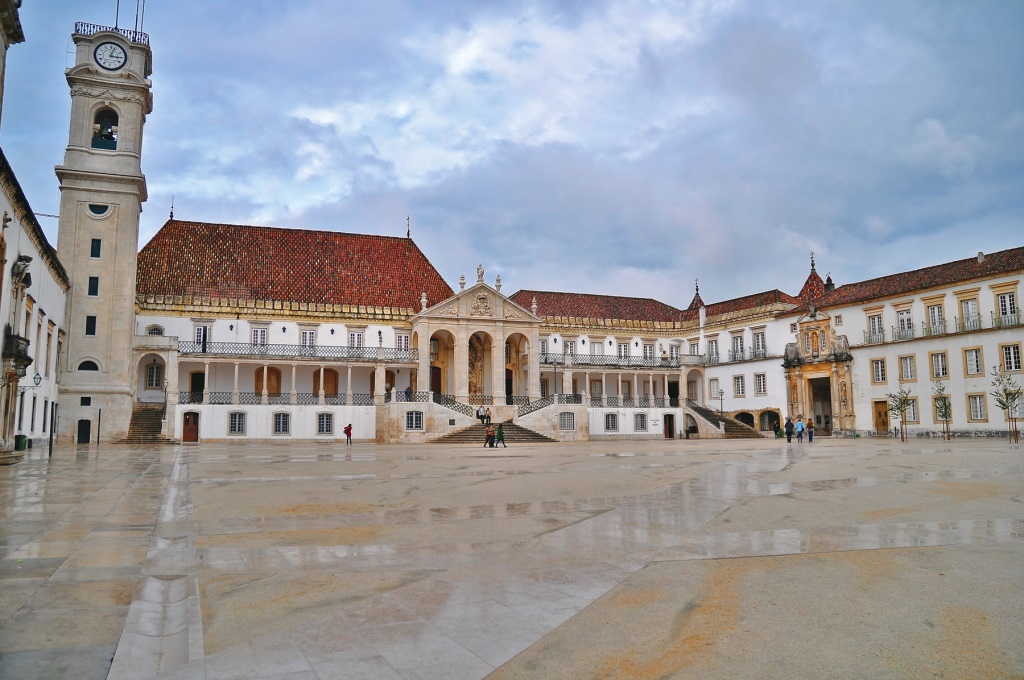
Visitors to the library are admitted in small groups every 20 minutes. Buy your ticket at the university’s visitor centre near the Porta Férrea. With the exception of the library, you can enter and explore on your own, or head off with a knowledgable university tour guide on one of three different tours (€12.50/15/20). These take place daily at 11am and 3pm.
2. Joanina Library
The Biblioteca Joanina, or university library, is one of the most visited buildings in Coimbra’s university complex. Construction was started in 1717 at the instigation of King Joao V, after whom the library is named, and was completed in 1728. Until its construction the old library had been moved constantly from one location to another, its collection expanding all the time and with no building suitable or large enough to house it. This building in Coimbra’s university complex is a fine sample of baroque architecture and a superb example of a collection of talented artists working together and collaborating to create one of the most extraordinary libraries in the world. As with many historic buildings of this age, the library has been renovated and embellished several times during its long history.
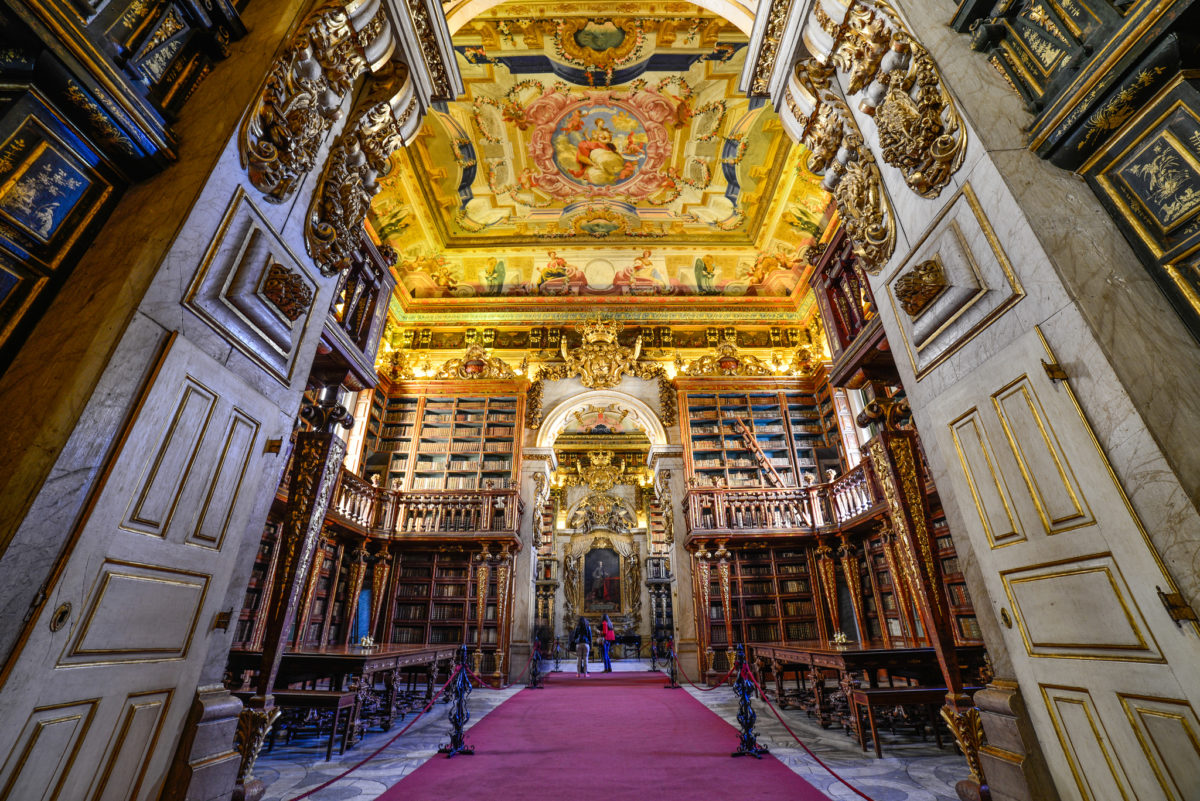
As you enter, your eyes are treated to a feast of red and gold, of arches, carvings and gilded patterns. Don’t miss the beautiful painted panel ceilings, which were undertaken by artist Antonio Simoes Ribeiro and Vicente Nunes, both of whom were brought in from Portugal’s capital, Lisbon, in order to undertake the project. The Chinese motifs are another must-see attraction. Adorning the bookshelves, these motifs were painted by artist Manuel de Silva and took more than three years to complete. Steps leading down from the grand main door will lead you a room that contrasts starkly with the opulent grandeur of the main rooms. Located here in the basement is a small prison, to which scholars and students were sentenced for confinement when convicted by the university’s “in-house” courts of law.
3. Old Cathedral of Coimbra
Founded during the reign of Afonso Henriques, Coimbra’s Old Cathedral represents, through its monumentality, the austere magnitude of the Romanesque architecture. It is seen as a treasure of the Portuguese Romanesque Style and is the only Portuguese cathedral built during the Reconquista era which has remained intact until today. It’s worth your while to cross its magnificent door, which reminds the entrance to a fortress, and discover its interior, where stone has created an impressive space characterized by an alternation of light and shadow which take us through massive columns and delicate capitals full of leaves and animal figures.
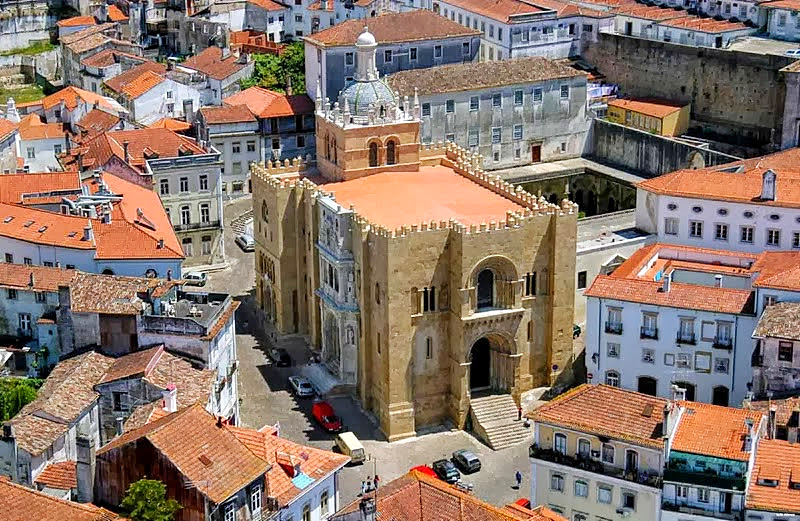
You should also save some time to admire the magnificent retable, carved in woodwork, which decorates the centre of the main chapel and is a Renaissance work by Olivier de Gand and Jean d’Ypres. Next to the church, you can appreciate the silence of the Gothic cloister which invites you to quietness and delight. Finally, you can walk around the building and stand in front of the Especiosa Door, a symbol of the Renaissance, scholar and cultural Coimbra. This remarkable work by João de Ruão was sculptured as a gigantic stone retable and displays delicately beautiful sculptured pieces. Next to the entrance, prophet Isaiah and Saint John the Baptist hold the magnificent locket with the image of Madonna and Child. This is considered one the most beautiful pieces of the Portuguese Renaissance.
4. Quinta das Lágrimas
Revive your romantic side with a visit to the stage of the most well-known Portuguese love story. At Quinta das Lágrimas, where Peter and Inês secretly met, there is a hotel incorporated into the Small Luxury Hotels, surrounded by gardens so rich and diverse that they equal the most complete Botanical Gardens in rarity and exoticism. Forget the past and the future and fall in love with here and now. Relax your body at an extraordinary spa and let your spirit fly away while discovering this place.
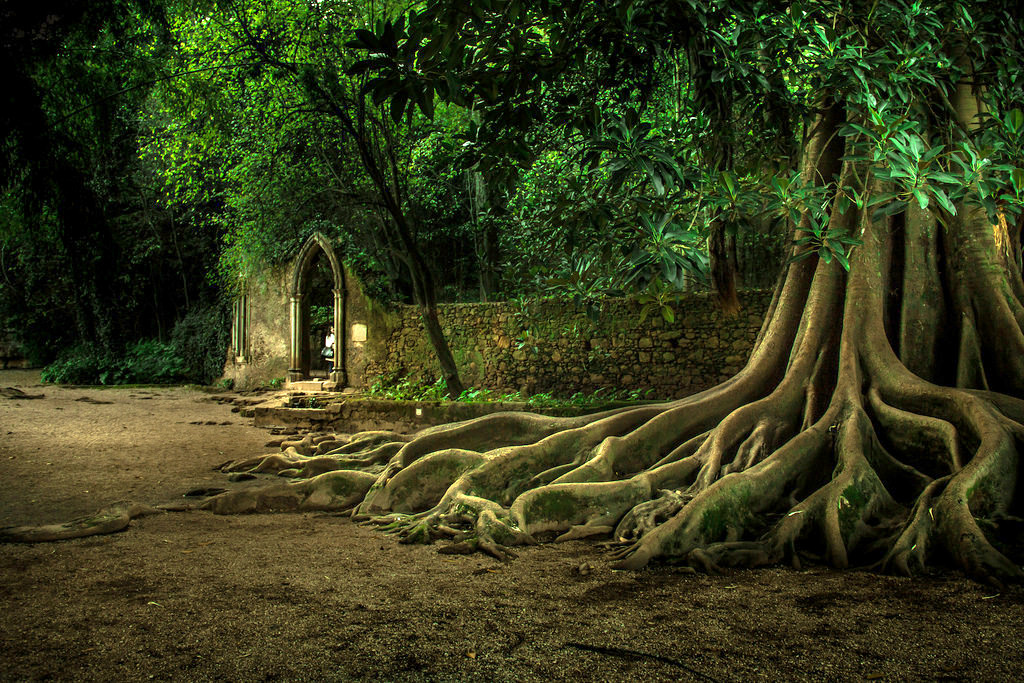
A love story becomes great because of the tales that keep it alive. And the story of Peter and Inês is no exception. Although the Prince lived with Inês at Santa Clara Palace for many years, folk tradition says that, in order to communicate with his lover, Peter would use a pipe which went through Quinta das Lágrimas until near the Poor Clairs convent. It is said that he would put letters into small wooden boats and then they would travel across the water that came from a fountain, the Fonte dos Amores (Fountain of Love). At Quinta das Lágrimas there is also another fountain, the Fonte das Lágrimas (Fountain of Tears) which, according to legend, is made out of the tears that Inês cried when she was murdered. It is said that the blood from her body left a stain of red seaweed which is still noticeable today.
5. Roman ruins of Conimbriga
Conimbriga is one of Portugal’s largest Roman settlements and arguably its most important. It is classified as a National Monument for its historical importance and is a popular sightseeing destination for visitors to nearby Coimbra and the surrounding area of north central Portugal. Conimbriga is found at a distance of 16km from Coimbra and just 2km from the village of Condeixa-a-Nova. It is easily reached for a morning, afternoon or full-day trip from Coimbra or, if you prefer to stay nearby, there is a popular luxury pousada in the village of Condeixa-a-Nova, which makes a great base from which to explore the surrounding area.
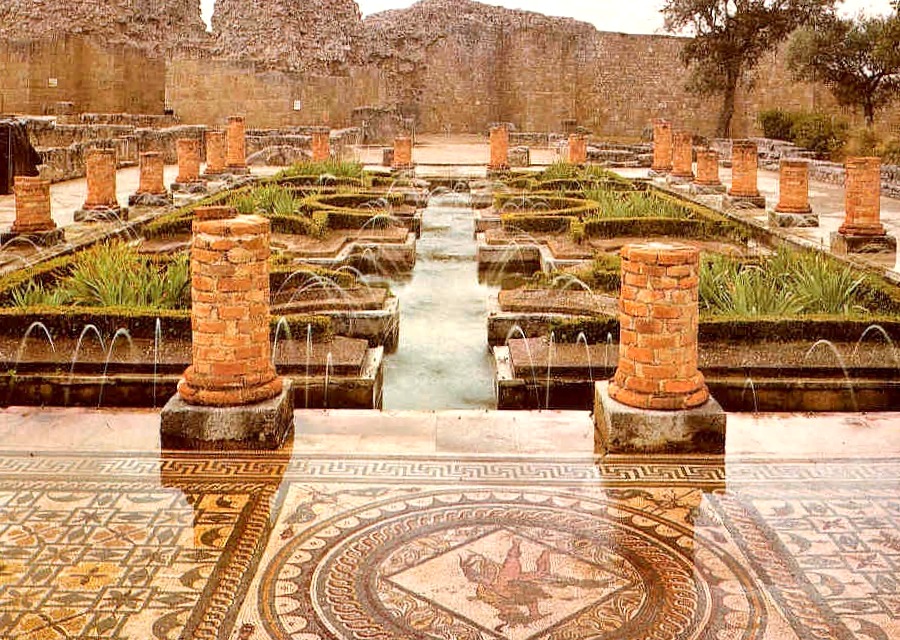
It is estimated that Conimbriga had over 10,000 inhabitants, pointing to its position as an important administrative centre in the region. While Conimbriga was not Portugal’s largest Roman city, it has certainly remained the best preserved. To date, it is estimated that only a tenth of the city has been excavated, and it is from this that archaeologists have been able to piece together its urban structure. The city walls are superbly preserved and there are some delightful examples of mosaic floors and the foundations of houses and public buildings throughout the city. The most important examples are Cantaber’s House, a huge residence dating back to the third century AD, which is one of the largest in the western Roman world, and the House of the Fountains.
6. Santa Clara-a-Velha Monastery
Closely connected with the figure of Saint Elizabeth of Portugal, the Santa Clara a Velha Monastery had difficulties early on because of its closeness to the Mondego River. Its living conditions worsened throughout time because of continual floods, which led King John IV to order the construction of a new monastery called Santa Clara a Nova (New Saint Clair). Recently, recovery works were carried out in the building led to the discovery of many archaeological traces. Because of this finding, this national monument now has its own interpretative centre which has revitalized the space and its History.
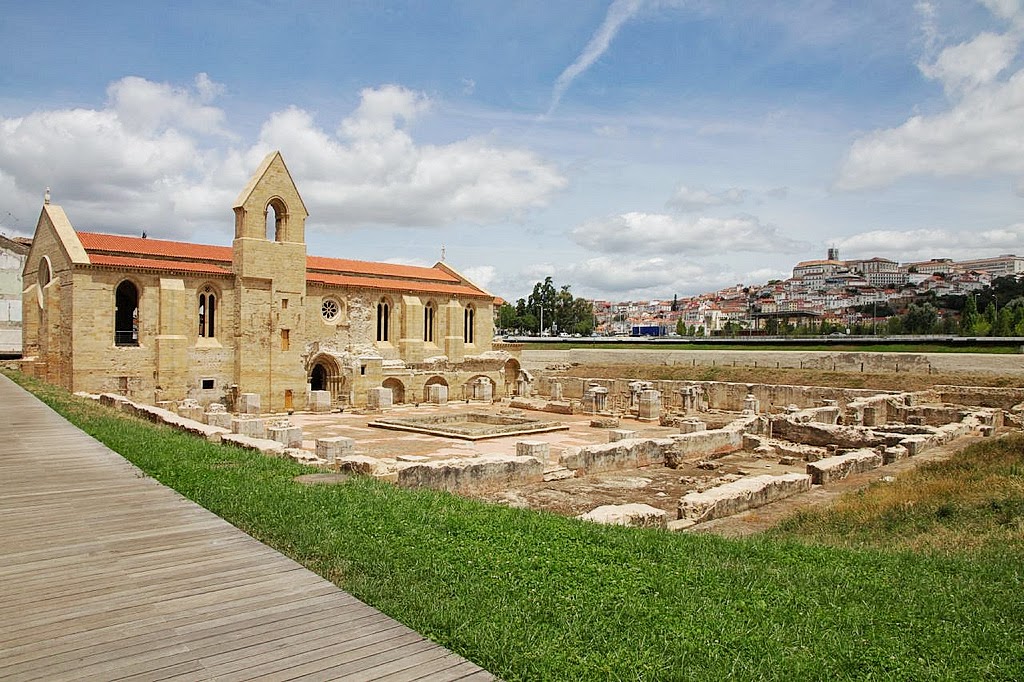
The first building of the monastery was founded by Dona Mor Dias in 1286, but the Santa Cruz monks opposed to the existence of a new feminine monastic house and so the community was closed a few years later. However, in 1314, Elizabeth of Aragon reopened the monastic house and the Poor Claire nuns returned to Coimbra. The old structure which still exists today was a part of the great undertaking sponsored by the Saint Queen. Built on the left bank of the Mondego River, the Santa Clara Monastery was always a victim of recurrent water invasions. Floods determined the timing of the construction and the price of the monastery rose progressively even leading to the construction of another floor. Over the next centuries, the life of the nuns was conditioned to the behaviour of the river and, finally, in 1677, the community left the space in order to occupy the building of the Santa Clara a Nova Monastery, which was built by order of King John IV in the opposite bank of the Mondego River.
7. Museu Nacional de Machado de Castro
The Museu Nacional de Machado de Castro in Coimbra is set within the former bishop’s palace in a 12th century building constructed over the extensive Roman foundations of the Cryptoporticus. Located close to the University of Coimbra and across the street from the Sé Nova, the Museu Nacional de Machado de Castro is a must-see for people interested in classical Portuguese art and outstanding Roman relics. Dating from 1913, the Museu Nacional de Machado de Castro was extensively renovated and restored from 2004-2012, winning architectural prizes in the process.
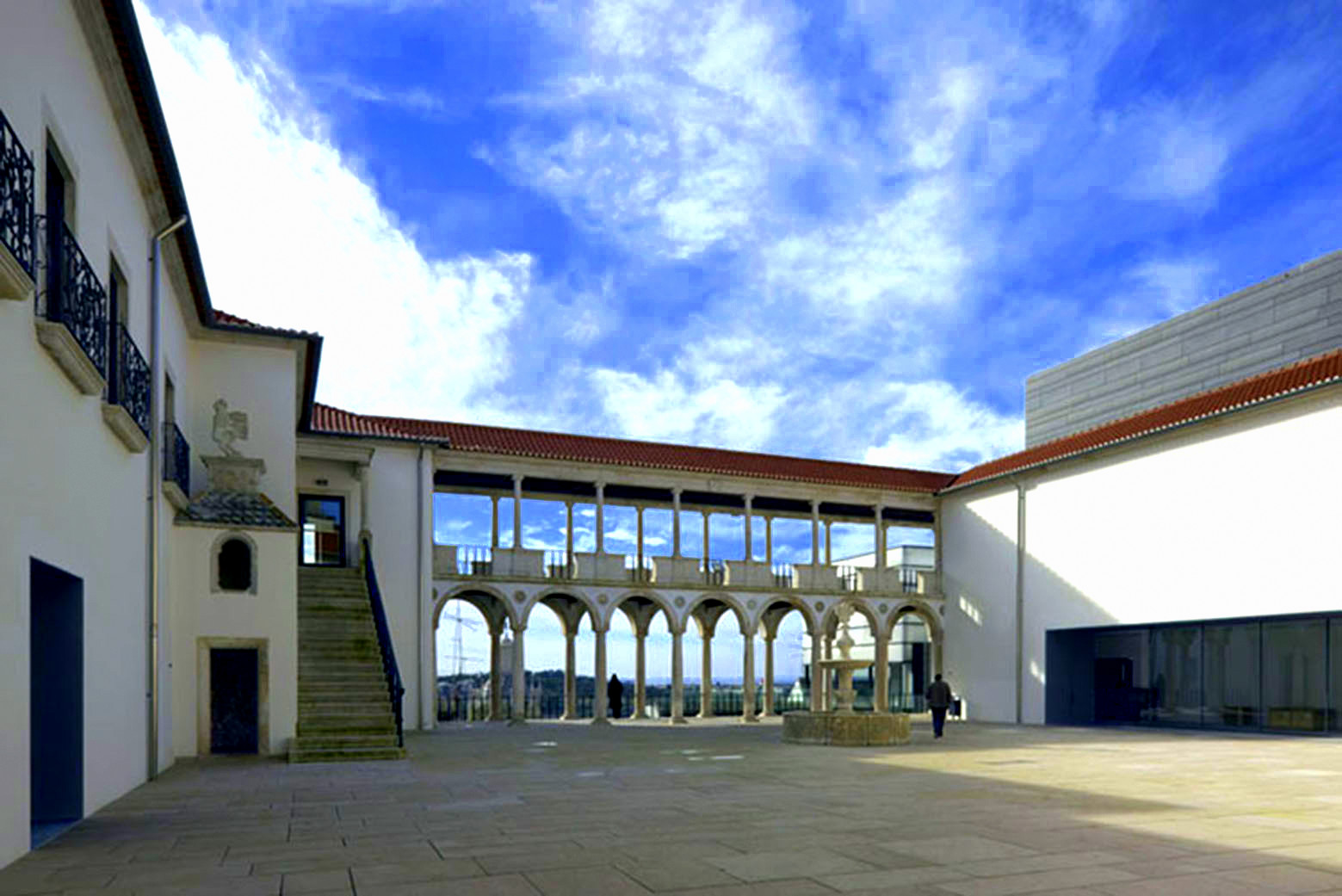
The museum stands on the site where the Roman forum of Aeminium was once located. This important Roman city was founded by Augustus around two thousand years ago in the first century. Its Cryptoporticus, a podium supported on the hillside by two vaulted galleries, overcame the difficulties of the steep slope on which it is built. This structure is the largest Roman building in Portugal and can be seen in the basement floors of the museum. Among the exhibits of Roman art within the museum are also artifacts from the nearby Roman city of Conimbriga.
8. Botanical Garden
The Jardim Botânico (Botanical Garden) in Coimbra is the oldest in Portugal and is associated with the nearby University of Coimbra. The Jardim Botânico was established in 1772 by the Marquis de Pombal on land previously owned by Benedictine monks. The garden covers about 13 hectares. The purpose of the garden was to supplement the study of medicine and natural history at the University of Coimbra as medicinal plants were grown and exotic species, brought back from Portugal’s overseas colonies, were planted.
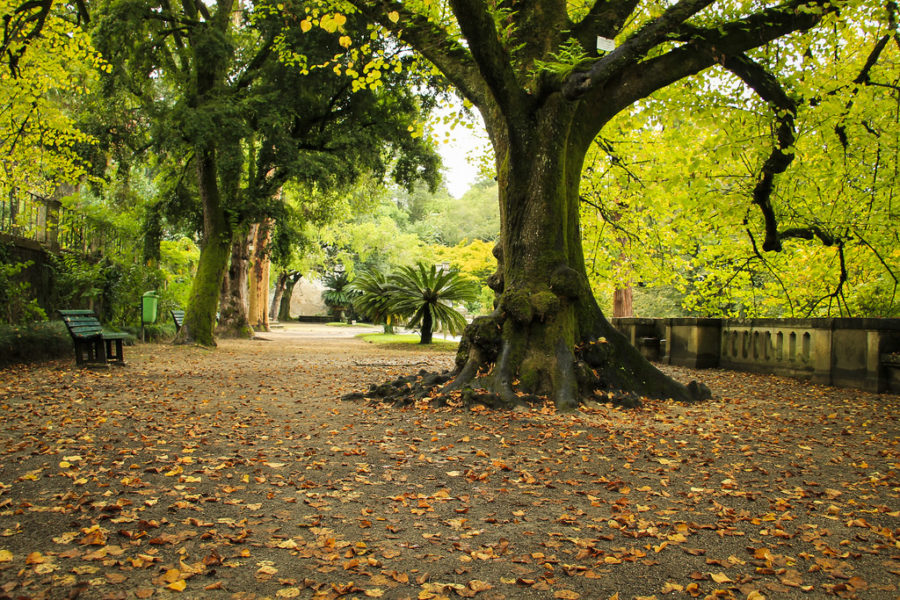
The Botanical Garden’s main glass house dates from 1856 – indeed this was one of the first buildings in Portugal to use iron in its superstructure. The garden is situated adjacent to the Aqueduto de São Sebastião (San Sebastian Aqueduct), built over what was once a Roman aqueduct in the 16th century. It is thought the prolific Italian architect Filippo Terzi had a hand in its construction. The graceful arches of the aqueduct carrying water into the city help to fuel the city’s growth at the time.
9. Portugal dos pequenitos
Portugal dos Pequenitos is one of Coimbra’s most unique attractions. It is particularly popular with young children but is none the less fascinating for visitors of all ages who are keen to catch a glimpse of this weird and wonderful world. Portugal dos Pequenitos was inaugurated back in 1940 and was the work of architect Cassiano Branco. It was designed to pay homage to Portugal, the people of Portugal, and the country’s cultural, historical and pedagogical influence throughout the world. It is essentially a miniature world, an exhibition park full of scaled-down models of some of the most famous national and international monuments and buildings, all achieved with an awe-inspiring level of detail.
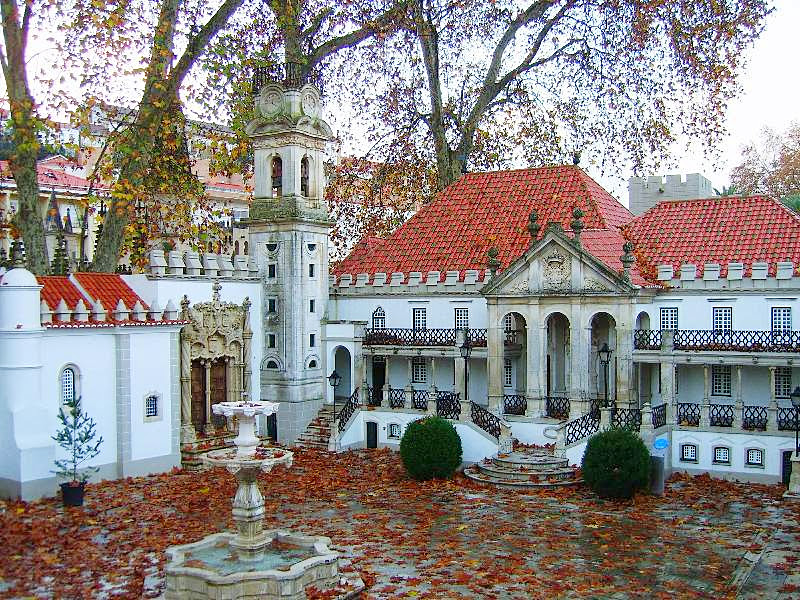
A visit to Portugal dos Pequenitos wouldn’t be complete without stopping to admire the museum exhibits, again all in wonderful detailed miniature. Start with the costume museum, with its collection of more than 300 miniature pieces of clothing, illustrating how Portuguese costume has evolved through the centuries. The naval museum is next, with its miniature boats, ships and maritime equipment, and finally the furniture museum, with its stunning pint-sized pieces made from exotic woods and showing an incredible degree of craftsmanship.
10. New Cathedral
The Sé Nova (New Cathedral) in Coimbra was originally a Jesuit church built slowly over a hundred years between 1598 and 1698. The church’s first architect was Baltazar Alvares and the design of the building was based on the Mosteiro de São Vicente de Fora in Lisbon. When the Jesuits were expelled from Portugal by the Marquis de Pombal in 1759, Sé Nova became vacant and in 1772 cathedral status was transferred from the smaller Sé Velha to the larger Sé Nov, which is located at the top of the hill in the historic higher part of the city (Alta de Coimbra) close to Coimbra University.
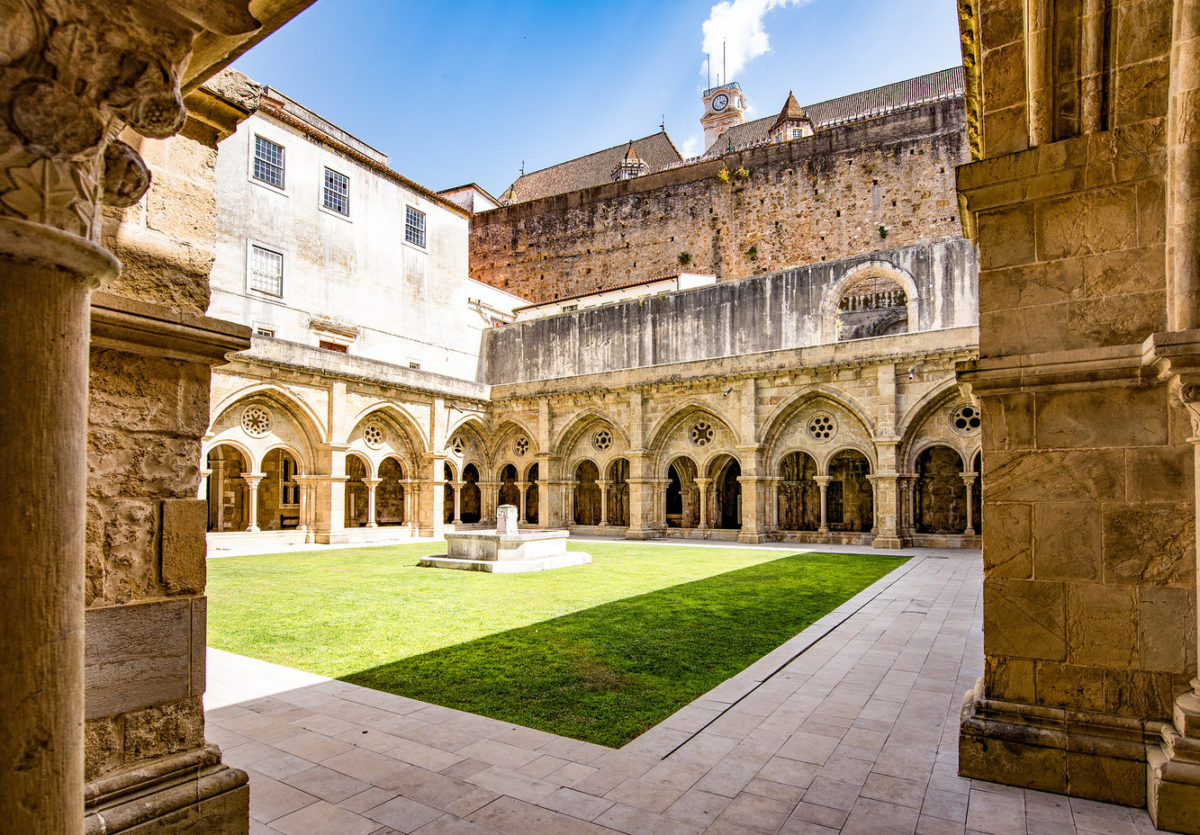
A highlight of the church’s architecture is the facade, which features four statues of Jesuit saints (St. Ignatius, St. Aloysius Gonzaga, St. Francis Xavier and St. Francis of Borja) in its lower part. The top half, completed in the eighteenth century is Baroque, and features large statues of Saint Peter and Paul. The interior consists of a single vaulted nave with numerous side chapels including the Chapel of the Resurrection, Chapel of St. Thomas and Chapel of the Sacrament. Also within the church are the tombs of various bishops of the cathedral including Jorge Almeida, Pedro Martins, Tibúrcio, Estevão Anes Brochardo and Egas Fafes and also the foundation stone of the earlier Visigothic cathedral that was on this site until its destruction in 1117.
11. St Michael’s Chapel of the University of Coimbra
The Chapel of the University of Coimbra – St. Michael’s Chapel – dates back to the 16th century, probably built upon an ancient chapel of the 12th century. It was built in Manueline style. The building that exists today is the result of works directed by Marcos Pires and finished by Diogo de Castilho. The Chapel underwent small renovations in the 17th and 18th centuries.The royal chapel dedicated to St. Michael was also the headquarters of the Brotherhood of Professors and Students under the invocation of Our Lady of Light. Its architectural structure is Manueline, a decorative style mainly visible in the huge windows of the aisle and transept.
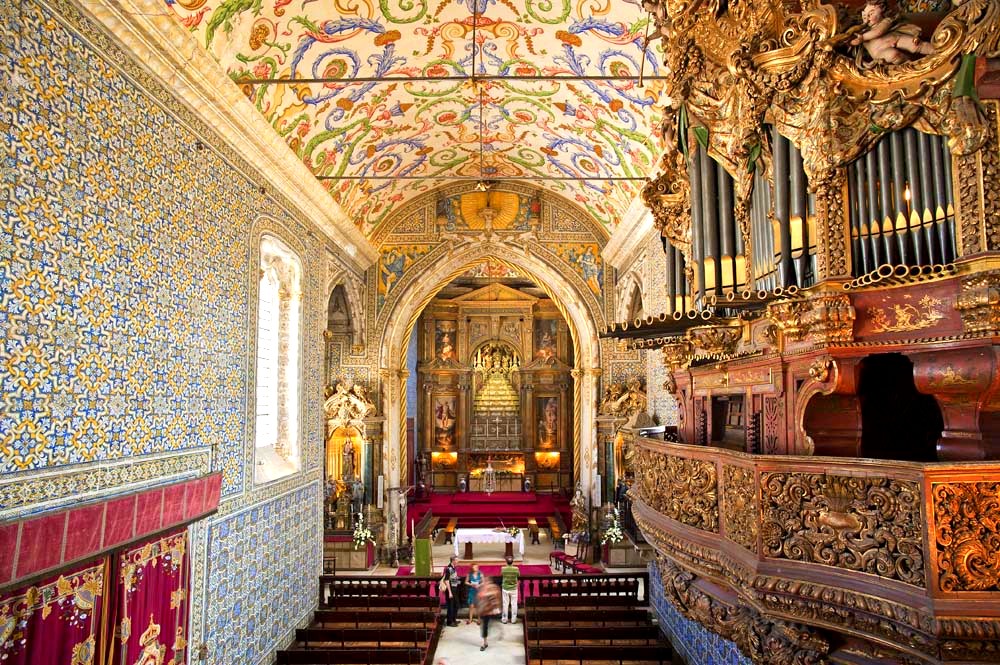
When the University acquired the Palace it also acquired the Chapel, maintaining its royal privilege. The tile flooring of the main chapel dates from 1613, and the aisle is covered with “carpet” like tiles that were manufactured in Lisbon. The painting of the ceiling was made by Francisco F. de Araújo by the end of the 17th century. Later it was renovated and the coat of arms was modernized. The Baroque organ is decorated with Chinese motifs similar to those present in the Baroque Library shelves. This organ dates from 1737 and has about 2,000 pipes. Its acquisition was sponsored by King John V. The organ is still operational.
12. Santa Cruz de Coimbra Monastery
The Santa Cruz monastery is one of the most fascinating religious buildings of Coimbra. The ancient church is the final resting place of Portuguese kings, has numerous glaring design flaws and an organ that can only be played by four people. The uninformed visitor will leave just thinking “what a delightful church” but there is so much more to discover. Coimbra was the original capital of Portugal; when the country was established in 1139 Lisbon was still held by the North African Moors. The first two kings of Portugal, Afonso Henriques (the conquer) and Sancho I (the populator) were placed in the most important church of Coimbra, the Santa Cruz, and this makes the church a National Patheon.
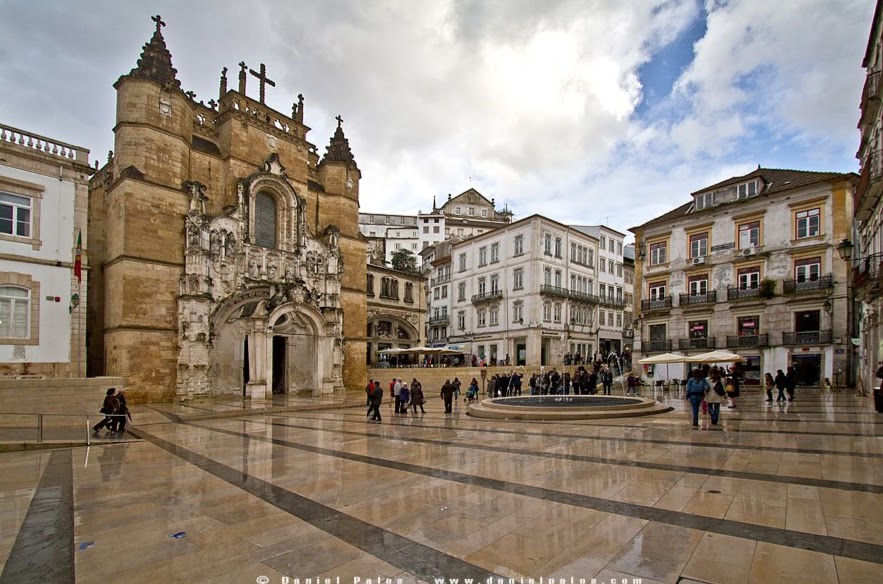
One of the most notable feature of the Santa Cruz church are the Azulejos tiles that line the walls of the church and depict key events in Portugal’s history. These tiles to the untrained eye appear beautiful but were so badly manufactured that the Lisbon pottery who manufactured them refused to put their name to it. On closer inspection the Azulejos tiles are of different intensities of blue and some tiles are of varying sizes. The most glaring errors are that broken or damaged tiles were simply replaced by tiles that were completely out of place. The tiles though badly produced served two important proposes within the church, first to improve the acoustics of the church and second to cover the faded/damaged fresco paintings. The ancient monastery was routinely flooded, when the Mondego River burst its banks during winter storms and the water damage caused the 12th-century paints to fade and decompose. When the church was remodelled in 18th century the frescos were covered by the cheap tiles.
13. Science Museum
Coimbra’s Science Museum, or Museu da Ciencia da Universidade de Coimbra, is located in the heart of the famous university complex in Coimbra, Portugal. It is a relatively new project, having been inaugurated in 2006, with a second stage to its development yet to be completed. The Science Museum project was designed to bring together the historical scientific collections of several different units from within the university, encompassing collections from the former physics museum, natural history museum, astronomical observatory and geophysical institute.
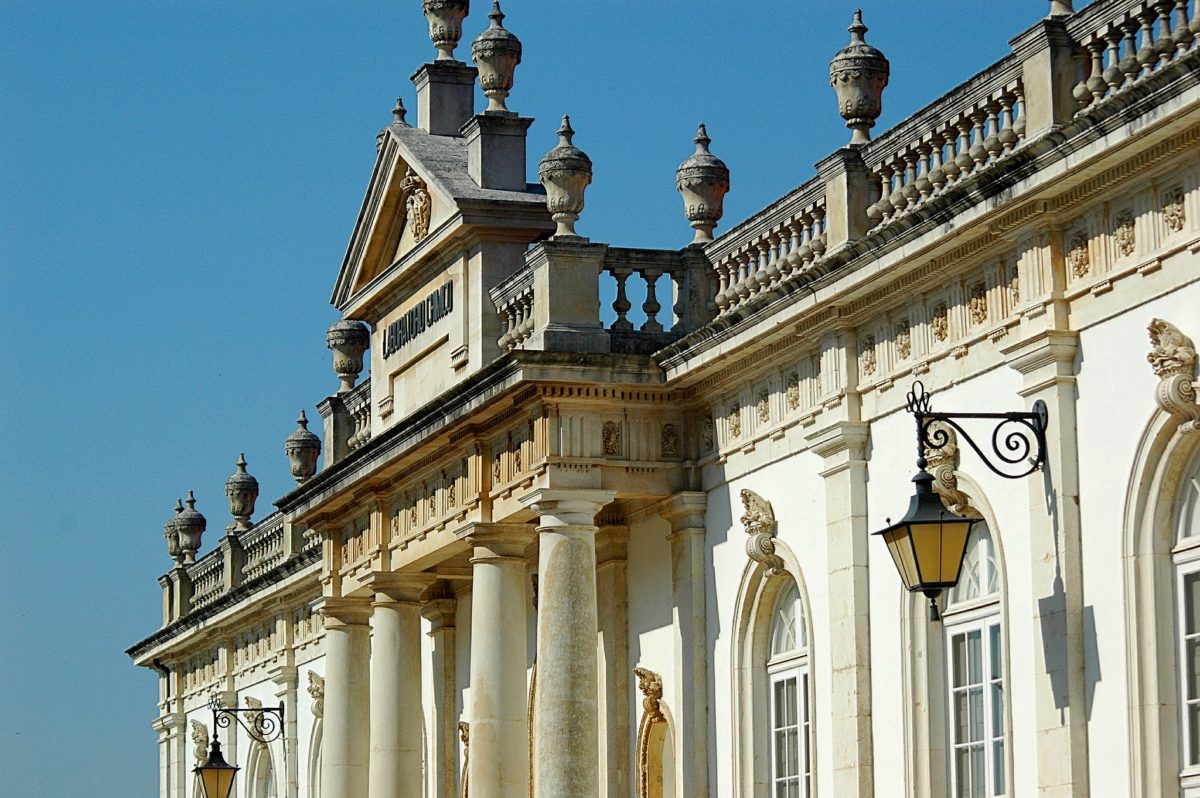
The scientific collections housed in the museum are amongst the oldest and most important in the whole of Portugal, with many dating back some two centuries to the period of reform, which established the basis for modern scientific research and teaching in Portugal. The centrepiece of Coimbra’s Science Museum is the permanent exhibition, entitled “Secrets of Light and Matter”. It presents a number of scientific objects and instruments belonging to different faculties and collections of the university to explore light and matter. It examines how our understanding and knowledge of light and matter is interlinked with scientific development over the course of the past four centuries. It offers many interactive exhibits that will appeal to young and old, regardless of their level of experience in science and education.
14. Santa Clara-a-Nova Monastery
The Monastery of Santa Clara a Nova was built in 1649 on the left bank of the River Mondego, intended to provide shelter to the Clarissa nuns of the Convent of Santa Clara a Nova, following the plans drawn up by the chief Royal engineer and Professor at the University of Coimbra, Friar João Torriano. In 1677, in a great procession from the former convent, Queen Santa Isabel’s remains were moved and placed in a silver tomb in the high altar.
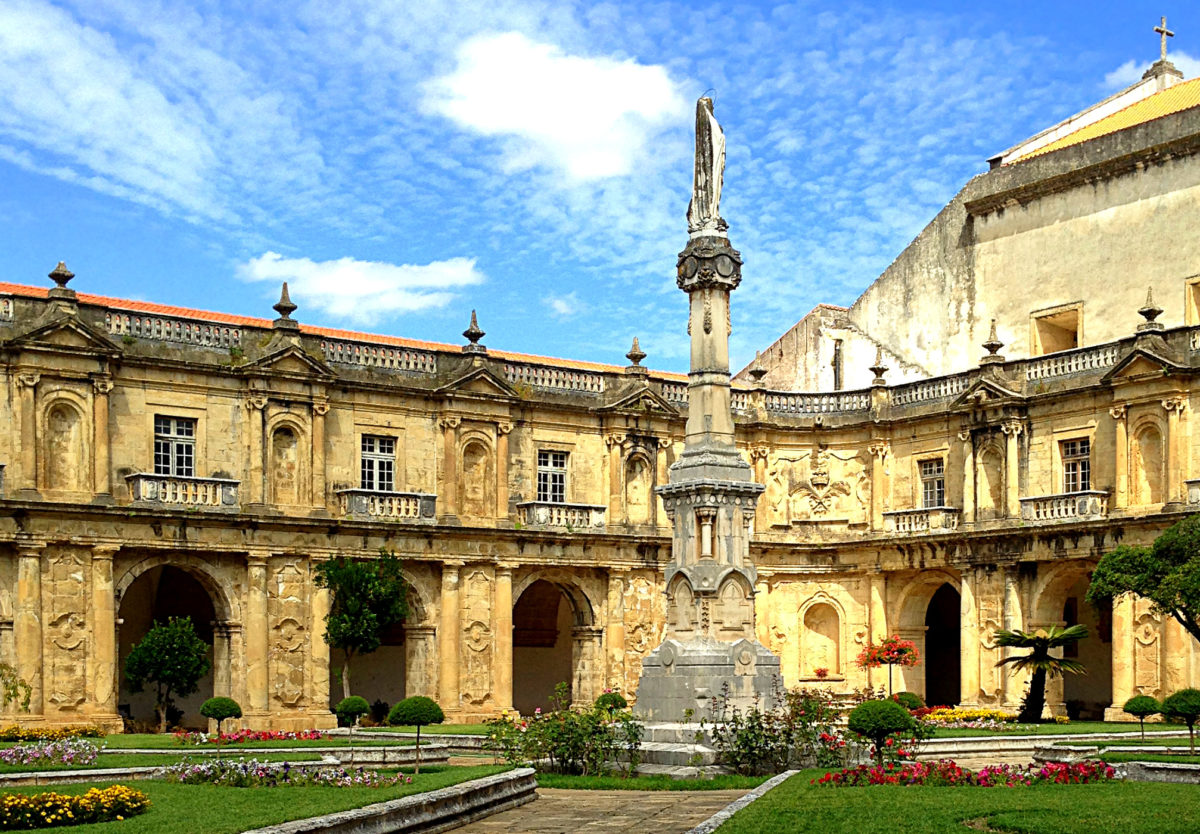
The church was designed by the architect, Mateus do Couto. In the large apse at the top of the church, there is a polychrome statue of Santa Isabel, by Teixeira Lopes (19th-century). The baroque gilded woodwork should also be noted, together with 18th-century paintings that allude to the life of the Holy Queen. Two fine Gothic tombs produced by the Oficina de Coimbra workshop, contain the mortal remains of the Infanta D. Isabel, daughter of King D. Afonso IV, and also the daughter of the Regent and Duke of Coimbra D. Pedro. Other items of note include the silverware, the early-18th century row of 78 chairs in the choir, the carved woodwork altar pieces from Santa Clara a Velha, and mannerist paintings.
15. Aeminium
Aeminium was the ancient name of the city of Coimbra, in Portugal. The Romans founded the civitas of Aeminium in this place at the time of Augustus, which came under the protection of nearby Conimbriga situated some 15 kilometres (9.3 mi) to the south. The Roman city was encircled by a wall, and followed an orthogonal plan, with the cardo maximus and decumanus maximus crossing at the Forum. An aqueduct existed, the remains of which were incorporated into a latter medieval renovation. Locations for the theater and amphitheater were also proposed, but still unconfirmed by archeology.
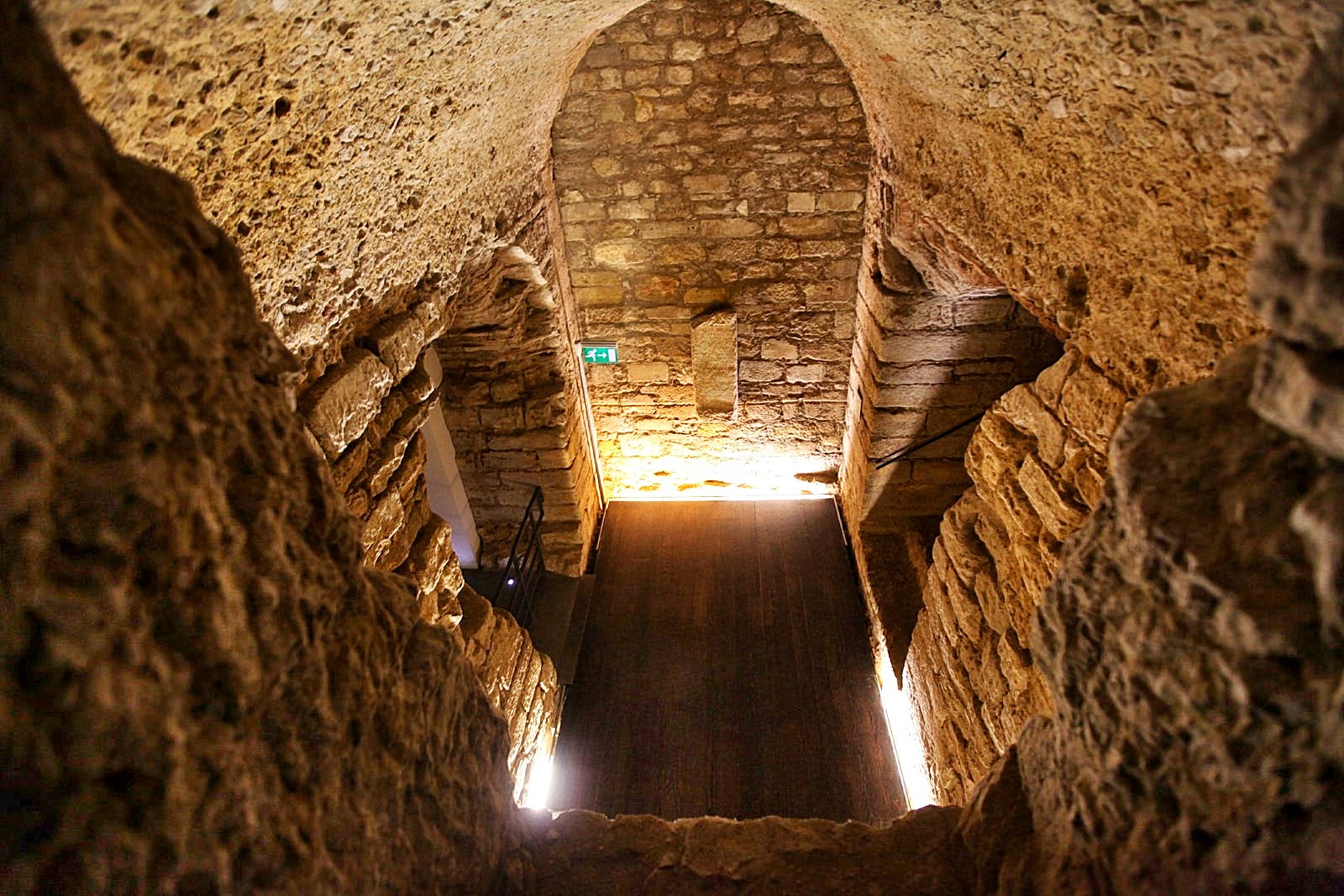
A triumphal arch is documented, but was destroyed in 1778. Also a necropolis was located to the east of the city. The Suebi razed the nearby township of Conímbriga in 468. Its inhabitants, who had meanwhile fled to Aeminium, kept the original name of their town. In modern Coimbra there are few remains from ancient Aeminium. The most important is the cryptoporticus, an underground gallery of arched corridors built in the 1st or 2nd century AD to support the forum of the city. Gaius Sevius Lupus was probably the architect. During the Middle Ages the bishop’s palace, now turned into the Machado de Castro Museum, was built over the forum; the cryptoporticus is located under it. The cryptoporticus can be visited through the museum.
